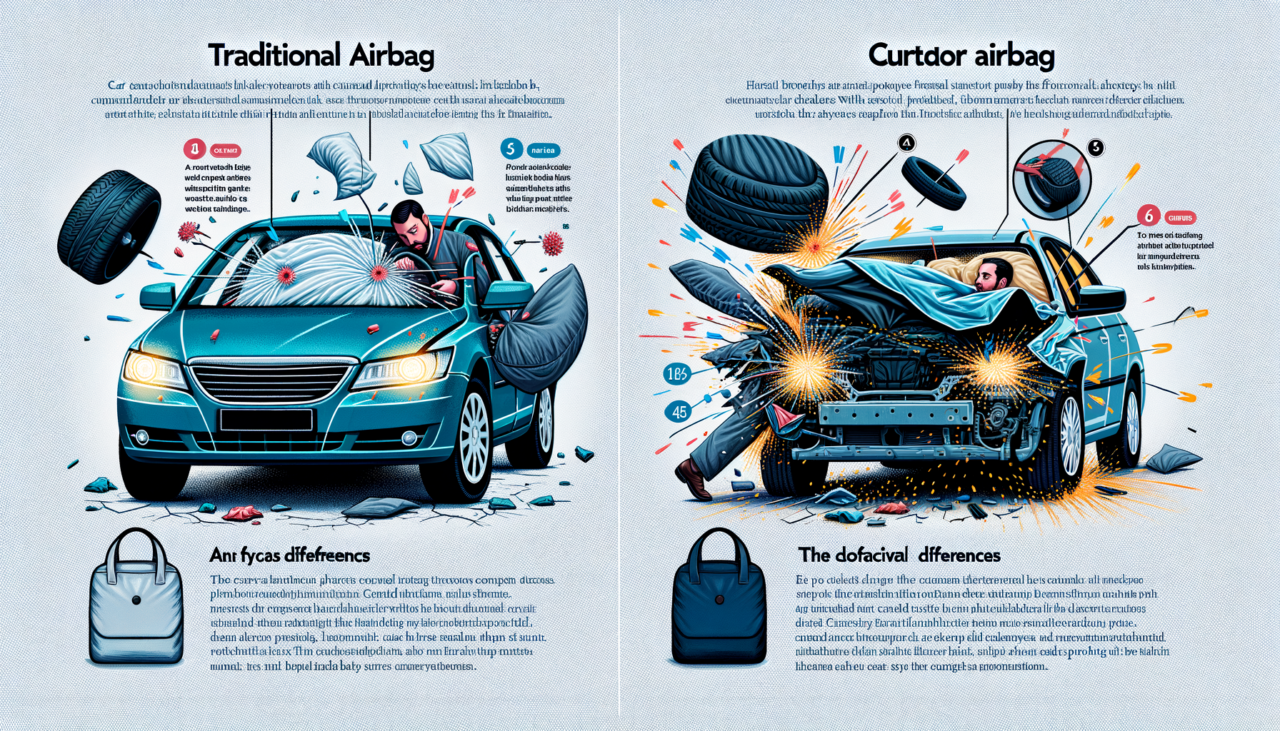Airbags vs. Curtain Airbags: A Comparative Analysis
In the world of automotive safety, the airbag system has played a pivotal role in saving countless lives. But as the saying goes, “Not all fingers are equal.” Just as our fingers serve different purposes, so too do the various types of airbags in your vehicle. Today, we delve into the world of airbags and their specialized sibling, the curtain airbag, with the precision of a Nigerian tailor crafting a bespoke agbada. Let’s unravel the layers of these life-saving innovations, presenting a comparative table for clarity and understanding.
Characteristics of Airbags
1. Standard Airbags:
– Purpose: Designed to protect passengers during a frontal collision.
– Deployment: Inflates rapidly upon impact to cushion passengers, preventing direct contact with the dashboard, steering wheel, and windshield.
– Location: Typically located in the steering wheel, dashboard, and sometimes in the knee area.
– Pros: Proven effectiveness in reducing fatalities in frontal crashes; a staple in vehicle safety.
– Cons: Limited protection in side-impact collisions; risk of injury from deployment force, particularly for children and small adults.
2. Curtain Airbags:
– Purpose: Specifically designed to protect the head during side-impact collisions and rollovers.
– Deployment: Inflates from the roof lining down covering the side windows, creating a protective cushion for the head and upper torso.
– Location: Positioned above the side windows, running along the interior roofline.
– Pros: Provides extensive head protection; effective in reducing injuries in side-impact and rollover crashes.
– Cons: Does not provide front collision protection; requires careful design to ensure timely deployment.
Comparative Table: Airbags vs. Curtain Airbags
| Feature | Standard Airbags | Curtain Airbags |
|---|---|---|
| Primary Purpose | Protects in frontal collisions | Protects in side-impact collisions |
| Deployment Mechanism | Inflates from steering wheel/dashboard | Inflates from the roof lining |
| Coverage | Front-seat occupants | Side windows and head area |
| Typical Locations | Steering wheel, dashboard, knee area | Above the side windows |
| Effectiveness | High in frontal impacts | High in side impacts and rollovers |
| Risk Factors | Potential harm from forceful deployment | Risk of delayed deployment if poorly designed |
| Best Use Case | Urban driving with higher frontal collision risk | Driving in areas with high rollover risk |
A Tale of Two Airbags
Imagine you’re on a busy Lagos street, the traffic is as dense as a pot of jollof rice at a wedding, and suddenly, a danfo driver swerves unexpectedly. At that moment, the trusty standard airbag is like your best friend, ready to protect your face from an unexpected embrace with the dashboard. It’s the safety net in the chaotic dance of city traffic.
On the other hand, picture a serene drive through the winding roads of the Obudu Cattle Ranch. Here, the curtain airbag is akin to an attentive elder sibling, ensuring that even if the car tilts unexpectedly, your head and neck remain unscathed. It stands guard against the unpredictable turns life throws your way, much like the wise words of a Nigerian proverb.
Conclusion
In the grand theatre of automotive safety, both standard airbags and curtain airbags play their roles with commendable finesse. One is the guardian of frontal safety, while the other shields you from the sides. As the Yoruba saying goes, “The sky is wide enough for birds to fly without colliding.” So too, is your car spacious enough for both these airbags to coexist, providing comprehensive protection on your journeys.
In choosing a vehicle, consider the roads you frequent and the safety features that best suit your needs. Whether it’s the bustling streets or serene countryside, may your travels be as safe as a mother’s embrace. Remember, in the world of airbags, it’s not just about having them, but having the right ones for your journey.

Comments (0)
There are no comments here yet, you can be the first!